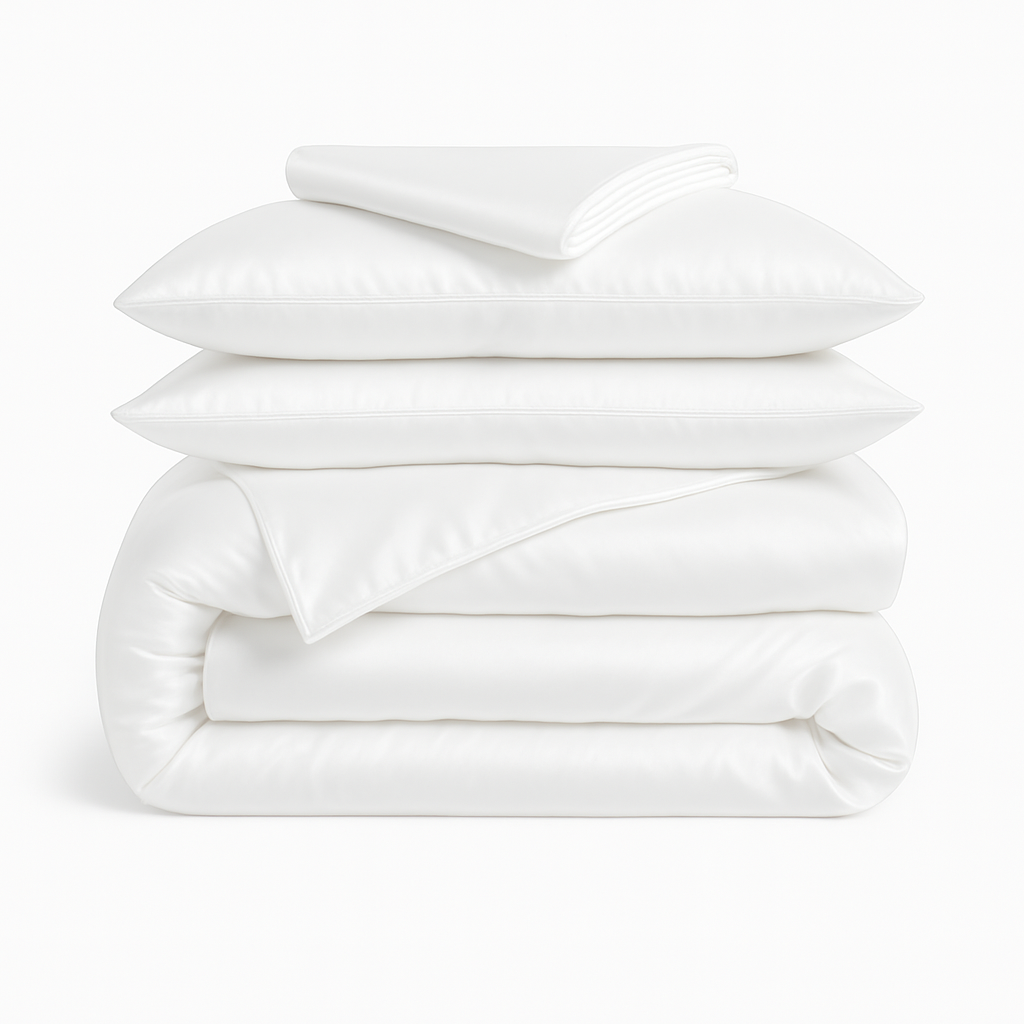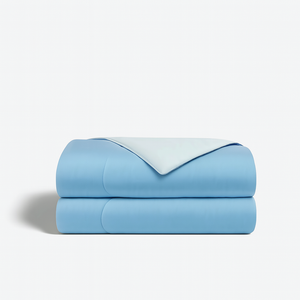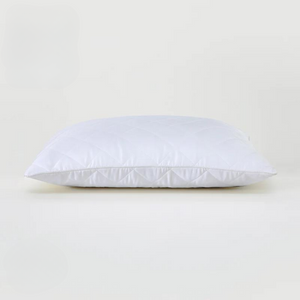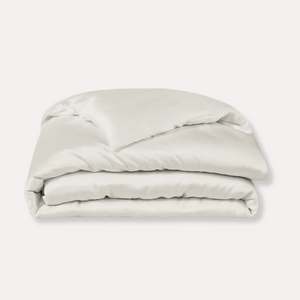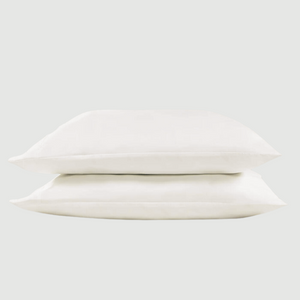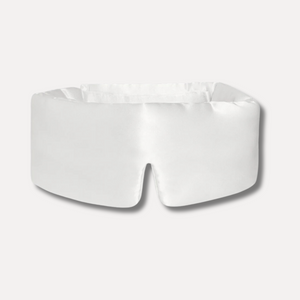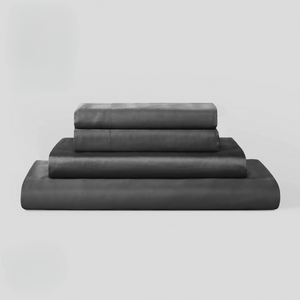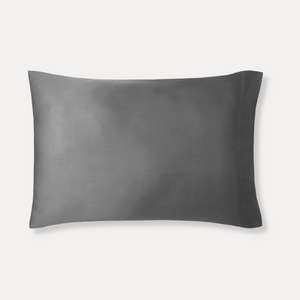If you often wake up with a stuffy nose, itchy eyes, or irritated skin, your bedding could be to blame. Dust mites, bacteria, and lingering allergens can easily build up in traditional fabrics — especially cotton or synthetics that trap moisture and oils.
For allergy-prone or sensitive sleepers, the right bedding can make all the difference. In this guide, we’ll explore what makes sheets hypoallergenic, which materials are best for sensitive skin, and how to create a healthier sleep environment overall.
Understanding Hypoallergenic Bedding
“Hypoallergenic” means a material is less likely to cause an allergic reaction or irritation. While no fabric can be 100% allergen-proof, hypoallergenic bedding is designed to resist the buildup of dust mites, mold, and bacteria — the most common triggers for nighttime allergies.
The best hypoallergenic sheets have a few things in common:
- Made from natural, breathable fibers that reduce moisture buildup
- Resist bacterial growth and dust mite colonization
- Are easy to clean and maintain
- Use chemical-free dyes and finishes
Why Allergies and Sensitive Skin React to Bedding
Your skin comes into contact with your sheets for about eight hours a night, so it’s no surprise that bedding materials can influence skin health. Common triggers include:
- Dust mites and their droppings, which thrive in warm, humid environments
- Residual detergents or harsh chemicals used in finishing processes
- Trapped sweat and skin oils that feed bacteria and fungi
- Synthetic fabrics that cause overheating and irritation
If you’re dealing with eczema, asthma, or contact dermatitis, switching to naturally hypoallergenic bedding can drastically improve comfort and sleep quality.
The Best Materials for Hypoallergenic Sheets
Eucalyptus Lyocell (TENCEL™)
Eucalyptus lyocell is one of the most effective fabrics for allergy-friendly bedding. Its smooth, moisture-wicking surface naturally resists bacterial growth and dust mites without any chemical treatments.
Because it’s breathable and cool to the touch, it helps prevent overheating — another trigger for skin irritation and nighttime sweating. The closed-loop manufacturing process also ensures no harsh chemicals remain in the fabric, making it safe for even the most sensitive skin.
Why it’s ideal for allergies and sensitive skin:
- Naturally antibacterial and hypoallergenic
- Resistant to dust mites and mold
- Chemical-free and non-toxic manufacturing
- Smooth, gentle texture that minimizes friction
Bamboo Viscose
Bamboo-derived viscose is another strong option for hypoallergenic bedding. It has natural antibacterial and moisture-wicking properties, keeping your sleep surface clean and dry.
However, not all bamboo sheets are made equally — look for OEKO-TEX® certified or closed-loop processed bamboo fabrics to ensure they’re produced without harsh chemicals.
Benefits:
- Breathable and moisture-absorbing
- Naturally antibacterial
- Gentle on sensitive skin
Organic Cotton
Organic cotton is far gentler than conventional cotton because it’s grown without pesticides and processed without formaldehyde or chemical softeners. While cotton isn’t inherently antibacterial, a tight weave (like percale) can help minimize dust mite penetration.
For best results, wash organic cotton sheets regularly in hot water to kill allergens and bacteria.
Benefits:
- Soft, breathable, and natural
- No chemical residue from pesticides or bleaches
- Safe for sensitive or baby skin
Tips for Creating an Allergy-Friendly Sleep Environment
Even with hypoallergenic sheets, small changes in your bedroom routine can make a big difference.
- Wash sheets weekly in hot water (around 130°F) to remove dust mites and bacteria.
- Use gentle, fragrance-free detergents and avoid fabric softeners that can irritate skin.
- Dry thoroughly — damp bedding encourages mold growth.
- Vacuum and dust regularly, especially around the bed frame and under the mattress.
- Use hypoallergenic pillow and mattress protectors for an added barrier against allergens.
- Keep humidity under 50% to deter dust mites and mold growth.
These simple habits, paired with the right bedding, can dramatically reduce allergic reactions and improve overall sleep quality.
Why Eucalyptus Bedding Is the Smartest Choice
Among all the hypoallergenic materials available, eucalyptus lyocell stands out as the most balanced option — combining skin safety, cooling comfort, and sustainable production.
Its silky-smooth surface prevents irritation, while its antibacterial properties keep your sheets fresher for longer. For those who experience skin flare-ups or allergies at night, eucalyptus bedding offers real relief — naturally.
Benefits at a glance:
- Hypoallergenic and antibacterial
- Breathable and cooling for hot sleepers
- Free from toxins, bleaches, and harsh dyes
- Gentle on eczema-prone and sensitive skin
- Eco-friendly and sustainably produced
Sleep Clean and Breathe Easy
At Loomii, our Eucalyptus Lyocell Bedding Collection is designed for sensitive sleepers who value comfort and wellness. Each set is made from 100% eucalyptus fiber in a closed-loop process that’s kind to your skin and the planet.
- Naturally hypoallergenic and antibacterial
- Moisture-wicking and cool to the touch
- OEKO-TEX® certified and chemical-free
- Perfect for allergy and eczema sufferers
